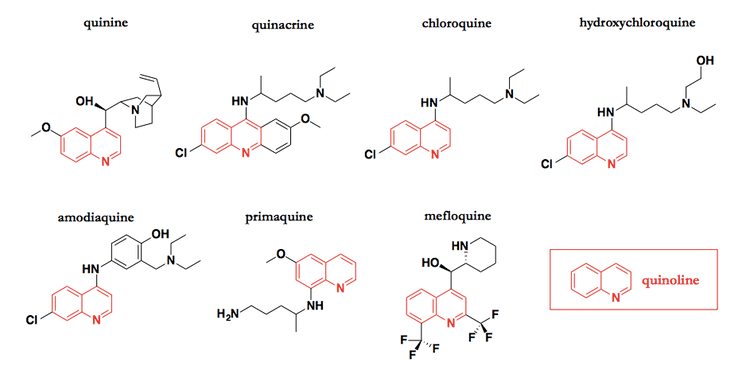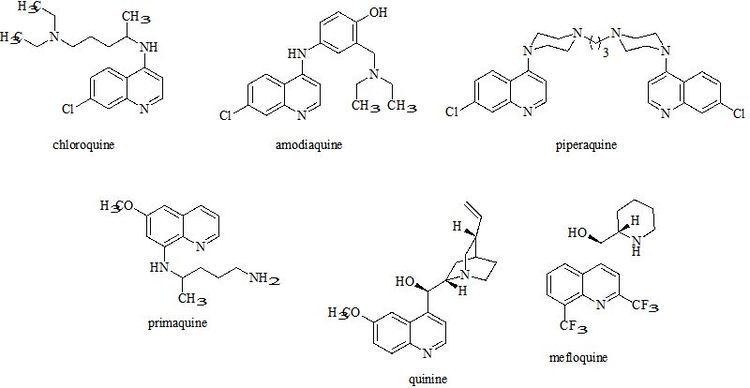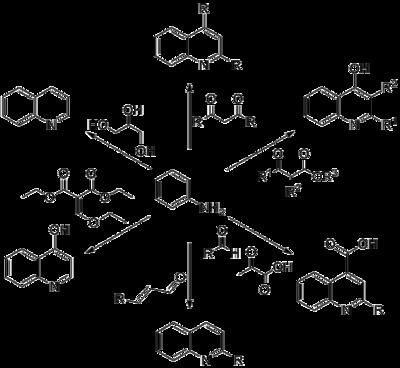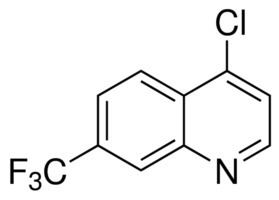3DMet B00959 Boiling point 238 °C Density 1.09 g/cm³ | Formula C9H7N Molar mass 129.16 g/mol Appearance yellowish oily liquid | |
 | ||
Quinoline
Quinoline is a heterocyclic aromatic organic compound with the chemical formula C9H7N. It is a colorless hygroscopic liquid with a strong odor. Aged samples, especially if exposed to light, become yellow and later brown. Quinoline is only slightly soluble in cold water but dissolves readily in hot water and most organic solvents. Quinoline itself has few applications, but many of its derivatives are useful in diverse applications. A prominent example is quinine, an alkaloid found in plants. 4-Hydroxy-2-alkylquinolines (HAQs) are involved in antibiotic resistance.
Contents

Occurrence and isolation

Quinoline was first extracted from coal tar in 1834 by Friedlieb Ferdinand Runge; he called quinoline leukol ("white oil" in Greek). Coal tar remains the principal source of commercial quinoline. In 1842, French chemist Charles Gerhardt obtained a compound by dry distilling quinine, strychnine, or cinchonine with potassium hydroxide; he called the compound Chinoilin or Chinolein. Runge's and Gephardt's compounds seemed to be distinct isomers because they reacted differently. However, the German chemist August Hoffmann eventually recognized that the differences in behaviors were due to the presence of contaminants and that the two compounds were actually identical.

Like other nitrogen heterocyclic compounds, such as pyridine derivatives, quinoline is often reported as an environmental contaminant associated with facilities processing oil shale or coal, and has also been found at legacy wood treatment sites. Owing to its relatively high solubility in water, quinoline has significant potential for mobility in the environment, which may promote water contamination. Quinoline is readily degradable by certain microorganisms, such as Rhodococcus species Strain Q1, which was isolated from soil and paper mill sludge.

Quinolines are present in small amounts in crude oil within the virgin diesel fraction. It can be removed by the process called hydrodenitrification.
Synthesis
Quinolines are often synthesized from simple anilines using a number of named reactions.
Going clockwise from top these are:

A number of other processes exist, which require specifically substituted anilines or related compounds:

Applications

Quinoline is used in the manufacture of dyes, the preparation of hydroxyquinoline sulfate and niacin. It is also used as a solvent for resins and terpenes.

Quinoline is mainly used as a feedstock in the production of other specialty chemicals. Approximately 4 tonnes are produced annually according to a report published in 2005. Its principal use is as a precursor to 8-hydroxyquinoline, which is a versatile chelating agent and precursor to pesticides. Its 2- and 4-methyl derivatives are precursors to cyanine dyes. Oxidation of quinoline affords quinolinic acid (pyridine-2,3-dicarboxylic acid), a precursor to the herbicide sold under the name "Assert".

The reduction of quinoline with sodium borohydride in the presence of acetic acid is known to produce Kairoline A. (C.f. Kairine)
